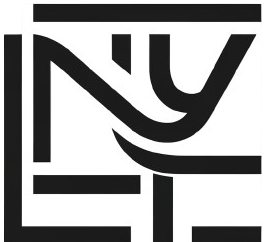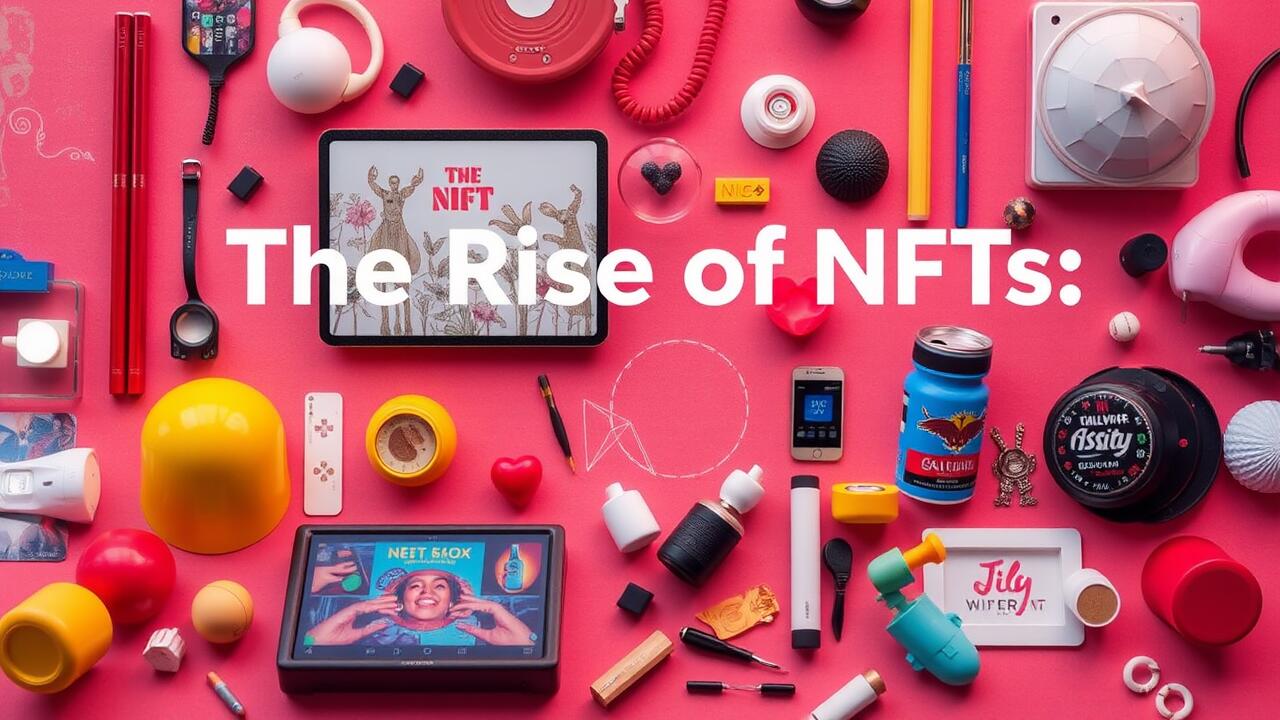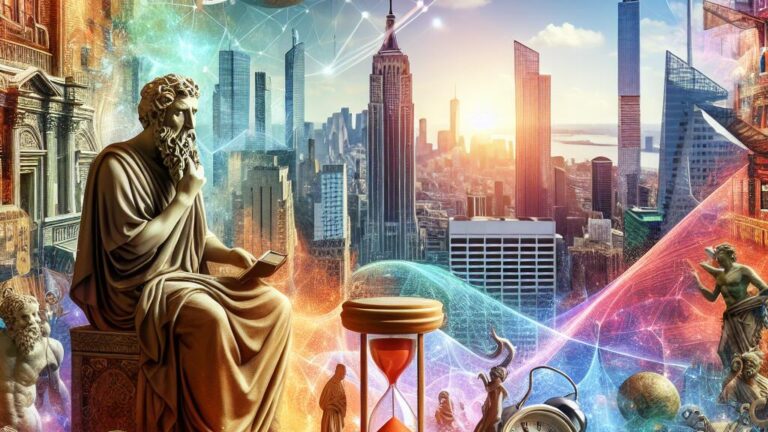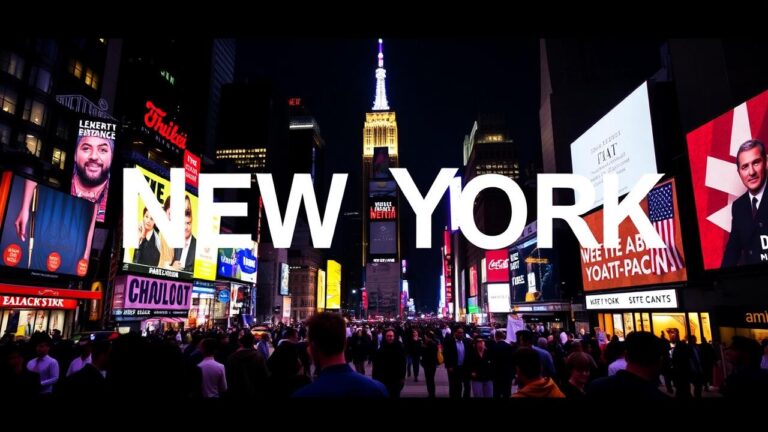The Rise of NFTs: How Digital Art is Changing the Art Market
Table Of Contents
The Rise Of NFTs: How Digital Art Is Changing The Art Market | The Rise of NFTs and Their Impact on the Changing Art Market
Key Takeaways
- The emergence of digital tokens and their importance in the art world
- The progression of online artistry
- The effects of digital tokens on the art industry
- Examples of thriving digital token initiatives
- Obstacles and objections regarding digital tokens
The Rise Of NFTs: How Digital Art Is Changing The Art Market | Understanding NFTs and Their Significance
The rise of NFTs has significantly transformed the art market, presenting new opportunities and challenges for digital artists and collectors alike. NFTs art serves as a unique digital certificate tied to specific works of art, allowing digital artworks to be bought, sold, and owned in a way that was previously unimaginable. This innovation is reshaping the landscape of modern art, moving digital artists into the spotlight and providing them with mechanisms to monetize their creations effectively. As digital painting evolves into recognized and valued forms of artistic expression, the art markets are witnessing a shift in collecting behavior and economic implications. Understanding the role of NFTs within this context is essential to grasping the broader impact of digital arts on the contemporary art market.
| Artwork Title | Artist | Sale Price (USD) | Purchase Date |
|---|---|---|---|
| Everydays: The First 5000 Days | Beeple | 69.3 Million | March 2021 |
| Crossroads | Beeple | 6.6 Million | February 2021 |
| CryptoPunk #7804 | Larva Labs | 7.6 Million | March 2021 |
| CryptoPunk #3100 | Larva Labs | 7.6 Million | March 2021 |
The Rise of NFTs: How Digital Art is Changing the Art Market | Definition and Functionality of NFTs
NFTs, or non-fungible tokens, have emerged as key players in The Rise of NFTs: How Digital Art is Changing the Art Market. These digital assets provide a unique method of representing ownership of artworks in the digital age. Unlike traditional paintings or sculptures, NFTs can encapsulate digital photos, art installations, and various forms of digital art, ensuring authenticity and provenance. Contemporary art galleries and artists have begun to embrace this technology, bridging the gap between the physical and digital realms. The transition serves not only as a new avenue for creation but also as a shift in how collectors engage with and purchase art.
Art dealers and contemporary artists are leveraging NFTs to redefine the commercial landscape of art. The Corcoran Gallery of Art and other art galleries are starting to include NFT exhibitions, showcasing how artworks can exist in both physical and digital formats. As this trend continues, collectors are reevaluating what constitutes art in the digital age. The rise of NFTs provides an opportunity for artists to monetize their work in innovative ways, with artworks now having the chance to reach a global audience without the constraints often faced in traditional settings.
The Role of Blockchain Technology
Blockchain technology serves as the backbone of the NFT ecosystem, enabling a secure and transparent way to represent ownership of digital assets. This innovation has driven The Rise of NFTs: How Digital Art is Changing the Art Market by providing artists, especially contemporary artists, with a unique platform to showcase their creativity. Events like Art Basel have become stages for showcasing NFTs, illustrating how traditional fine art is blending with digital formats. The integration of blockchain ensures that each nft remains unique, making it nearly impossible to manipulate the market through counterfeit copies.
The decentralized nature of blockchain has transformed not only how digital art is bought and sold but also how generative art can be shared among collectors. Artists can now leverage digital currency for transactions, broadening their reach and allowing for instant sales. As reported by sources like The Art Newspaper, these innovations empower artists and collectors alike, creating a dynamic market that reflects the ongoing evolution in the art world. The rise of NFTs has sparked conversations surrounding technology’s role in fostering new forms of expression within the realm of contemporary art.
The Evolution of Digital Art
As the digital art world evolves, a paradigm shift has emerged with the rise of NFTs, fundamentally changing market trends and the way artists and collectors engage with their work. Digital currencies now play a crucial role in transactions, allowing creators to monetize their art in unprecedented ways. The transition from traditional mediums to digital formats has given birth to new aesthetics, where computer art becomes a viable and respected form. Market makers are recognizing the value of NFT artwork, leading to exhibitions that showcase digital files alongside physical art. This transformation emphasizes the importance of digital art rights, making it clear that NFTs have revolutionized the art market, creating opportunities for artists while reshaping collectors’ behaviors.
Historical Context of Digital Art
The emergence of digital art can be traced back to the late 20th century, where artists began exploring new technologies to create and share their work. With the rise of computers and software programs, digital art forms evolved, leading to innovative practices that transformed the art landscape. Digital artwork became a significant part of exhibitions and galleries, establishing a digital art stand alongside traditional art forms. The focus on digital art shows highlighted the potential of digital artworks, paving the way for what we now recognize as the digital art market.
The advent of NFTs has further enhanced this journey, introducing a unique dimension to digital art pieces. Artists now have the opportunity to mint nft-based artworks, granting them ownership and authenticity in a way that wasn’t previously possible. This evolution has allowed for a greater appreciation of digital art online, leading to increased visibility and sales in the art market. Digital art offers new occasions for collectors, transforming the dynamics of how art is bought and sold. The Rise of NFTs: How Digital Art is Changing the Art Market reflects these profound shifts, making the digital art landscape more vibrant and accessible than ever.
The Transition from Traditional to Digital Medium
Traditional art mediums have long dominated the art industry, laying the foundation for artistic expression. The emergence of digital art platforms has led to a significant shift in the art market landscape. Artists have begun to embrace technology, creating special digital artworks that challenge conventional notions of ownership and value. The Rise of NFTs: How Digital Art is Changing the Art Market highlights this evolution as nft artists leverage blockchain technology to secure digital art ownership. This transition has sparked a digital renaissance, redefining how artworks are created, shared, and sold within the modern art world.
As digital art continues to gain momentum, the traditional art market faces new challenges and opportunities. Art market structures are evolving to accommodate the growing presence of digital art collectors, who are increasingly interested in acquiring unique pieces through specialized art marketplaces. The introduction of digital art programs has provided artists with new avenues for expression and engagement. The Rise of NFTs: How Digital Art is Changing the Art Market emphasizes the impact of this shift, as the art community navigates the integration of traditional practices with innovative digital mediums.
The Impact of NFTs on the Art Market
The emergence of NFTs has sparked a transformative wave within the art world, reshaping how both artists and art buyers perceive value in digital works. This shift is evident in the nft market, where creative artwork is celebrated not just for its aesthetics but also for its potential as an investment. The Rise of NFTs: How Digital Art is Changing the Art Market highlights the phenomenon of new art communities forming around these digital creations, fostering collaborations that push the boundaries of artistic innovation. As collectors navigate various nft marketplaces, the allure of the artverse expands, offering a dynamic platform for artistic expression. Digital works are no longer relegated to obscurity; they stand as legitimate forms of art, redefining traditional perspectives on artwork investments and the very nature of ownership.
Economic Implications for Artists
The emergence of NFTs has significantly altered the economic landscape for artists in the digital era. Traditional art institutions have struggled to adapt to this novel art form, leading many to reevaluate how they approach art creation and the value of their work. NFT sales have opened up new avenues for artists to monetize their digital products. Unlike the traditional art world, where physical artwork takes center stage, the focus has shifted to the digital art mile, promoting a unique art experience that allows creators to showcase and sell their work directly to collectors.
This shift has empowered artists to bypass conventional galleries and auctions, providing them with greater control over their artwork and financial returns. The rise of NFTs enables artists to explore innovative ways to engage with their audience, further blurring the lines between art and commerce. As digital art continues to gain traction, the implications for artists extend beyond financial rewards. The art landscape is evolving, and embracing these changes is crucial for artists who wish to thrive in this dynamic environment.
Changes in Collecting Behavior
The rise of NFTs has significantly transformed how artworks change hands, facilitating more direct transactions between artists and collectors. Digital creators are able to showcase their work in innovative ways, utilizing digital tools and diverse artistic techniques. Art enthusiasts now engage with digital pieces through platforms that enable them to explore the artistic realm beyond traditional galleries. As virtual reality art gains popularity, collectors are increasingly gravitating toward these immersive experiences, fostering vibrant art communities that value digital mediums.
This shift in collecting behavior has also been evident at international art fairs, where NFTs are gaining recognition alongside traditional artworks. Fellow art enthusiasts are more inclined to invest in unique digital assets, recognizing the potential for both emotional connection and financial investment. The increased visibility of digital painting techniques and artistic diversity has broadened the audience, allowing for an appreciation of artworks that were once considered niche. The rise of NFTs is reshaping perceptions of value and ownership, making digital art more accessible and desirable in the contemporary art scene.
Case Studies of Successful NFT Projects
Recent examples of successful NFT projects illustrate the transformative technology behind The Rise of NFTs: How Digital Art is Changing the Art Market. International art events have showcased new NFTs, revealing how digital content is becoming a legitimate art form. Artists are embracing the digital side of creation, using digital photos and three-dimensional art to redefine traditional art transactions. The shift to digital platforms allows for unique digital representation of expensive artwork that was previously confined to physical media. This technological shift not only enhances accessibility but also challenges collectors to rethink their approach to traditional art forms, as they navigate the intersection of digital and tangible assets.
- Artists can reach a global audience without geographical limitations.
- NFT marketplaces provide new revenue streams for creators.
- Limited editions and scarcity drive demand for digital art.
- Provenance and authenticity are easily verifiable with blockchain technology.
- Community engagement and social media play crucial roles in promoting NFT projects.
- Collaborations between artists and tech companies lead to innovative creative expressions.
- The NFT market continues to evolve, presenting new opportunities and challenges for artists and collectors alike.
Prominent Artists and Their NFT Launches
The emergence of prominent artists in the NFT space showcases The Rise of NFTs: How Digital Art is Changing the Art Market. Global artists utilize digital techniques to create unique artistic forms that resonate with collectors. These creators often transform their original artwork into digital asset products, allowing for innovative expressions of creativity within the digital age. The allure of NFT art not only elevates the art-viewing experience but also establishes a new market that values digital work worth equally to traditional mediums. Exquisite paintings and art-inspired environments take on fresh significance as they transition from physical to digital forms.
Leading figures in the art world have begun launching their NFT collections, further emphasizing the growing acceptance of digital assets. This shift has encouraged artists to explore new creative forms while gaining visibility in the digital space. As more established creators embrace NFTs, they reinforce the legitimacy of this medium and attract various collectors eager to invest in contemporary works. By integrating modern technology with traditional artistry, these artists redefine the relationship between creator and audience, illustrating the ongoing evolution in The Rise of NFTs: How Digital Art is Changing the Art Market.
Notable Sales and Auctions in the Digital Art Market
The art market has witnessed remarkable transformations with the rise of NFTs, particularly highlighted by notable sales and auctions that capture the attention of both enthusiasts and traditional art collectors. Some digital pieces have fetched staggering amounts, demonstrating the immense value of unique creative work in online galleries. This shift towards digital spaces allows artists to explore new innovations and leverage innovative technology to present intricate artwork. The capability for artists to own NFTs also enhances their creative freedom, enabling them to reach a broader audience beyond the constraints of physical artwork.
Prominent sales events have showcased not only the financial potential of digital art but also its cultural significance. Artists are now able to market their creative works directly to collectors, often bypassing traditional mechanisms that have dominated the industry for years. High-profile auctions featured groundbreaking pieces that challenge conventional norms, enticing both seasoned investors and new collectors alike. As reported by various art newspapers, the enthusiasm surrounding these auctions signifies a pivotal moment in The Rise of NFTs: How Digital Art is Changing the Art Market, making intricate artwork easier to access and appreciate in an increasingly digital world.
Challenges and Criticisms of NFTs
The rise of NFTs has sparked significant discussions about their impact on the artistic landscape. Critics point to the environmental concerns associated with the energy consumption of blockchain technology, which underpins the creation and sale of digital asset products. As commercial galleries adapt to this new art game, the transition raises questions about sustainability in the face of stunning art generated through digital systems. While NFTs facilitate creative exploration and the democratization of artistic creation, they also prompt debates about the value of art and its implications for collectors. In this wide change within The Rise of NFTs: How Digital Art is Changing the Art Market, the balance between preserving traditional artistic forms and embracing innovative digital experiences remains a vital topic for artists and audiences alike.
Environmental Concerns and Sustainability
The Rise of NFTs: How Digital Art is Changing the Art Market has sparked discussions around sustainability and environmental impacts. The transition to digital canvases and the use of blockchain technology for digital transactions raise concerns about energy consumption. Art experts highlight that while traditional galleries consume resources for physical art, this new digital platform presents unique challenges. The growing popularity of virtual galleries can lead to an increased carbon footprint, particularly as more emerging artists utilize these platforms for their innovative works.
Critics argue that the energetic demand of NFT transactions could overshadow the transformative change that NFTs bring to art ownership and the artistic experience. As artists explore this new realm, the implications extend beyond economics and creativity, urging stakeholders to consider the sustainability of their practices. Balancing the excitement of new artistic creations with the environmental impact remains a critical conversation in art history. The Rise of NFTs: How Digital Art is Changing the Art Market must navigate these issues to ensure a responsible future for both artists and collectors.
- The environmental impact of blockchain technology should be carefully evaluated.
- Artists and collectors need to be educated about the sustainability of digital platforms.
- Exploring eco-friendly alternatives for NFT creation and transactions is essential.
- Collaborations between artists and environmental organizations can raise awareness.
- The art community should advocate for greener energy sources to power blockchain operations.
- Transparency in the energy usage of NFT platforms can help inform stakeholders’ decisions.
- Continued research into the carbon footprint of digital art practices is necessary for sustainable growth.
Conclusion
The Rise of NFTs: How Digital Art is Changing the Art Market represents a significant shift from conventional artistic practices, allowing artists to bypass bulky art supplies and traditional art funds. NFT transactions have introduced transformative advancements that democratize access to art ownership while enabling creators to maintain control over their works. This evolution reflects a broader trend where digital mediums gain prominence, reshaping how art is perceived, collected, and valued. The implications of this shift are profound, signaling a future where digital art holds its own in the gallery space alongside traditional formats.
FAQS
How are NFTs affecting the way that artwork changes hands in contemporary art galleries?
NFTs have revolutionised the art market by enabling digital art to be registered on a digital ledger, ensuring that a particular artwork’s authenticity and ownership are easily tracked. This innovation means that in the art world, digital NFT artwork can be bought and sold just like famous paintings, often leading to market manipulation and the emergence of novel art forms that transcend traditional commercial gallery boundaries.
How has the introduction of NFT art transformed the way artwork changes hands in the art market?
The introduction of NFT art has significantly transformed the art world, particularly in how a work of art changes hands. In contemporary art galleries, the use of digital art occasions allows for more accessible transactions, connecting buyers and artists in innovative ways. This shift also means that creativity transcends traditional mediums, and NFTs provide a unique platform for artworks to be bought and sold. An art gallery can showcase not only physical pieces but also digital pieces that can be authenticated as NFT art, changing the dynamics of ownership and appreciation in the art market.
How does NFT art influence the operations of a contemporary art gallery and the broader art world?
NFT art has significantly impacted how artwork changes hands within contemporary art galleries by introducing digital ownership concepts and transforming traditional buying and selling practices. As the art world adapts to this innovation, the perception and value of artwork evolve, leading to new business models that can accommodate digital assets like NFTs. Inside paintings may gain a digital counterpart, allowing collectors to own both physical and virtual representations of art work in the marketplace.
How does NFT art impact the dynamics within a contemporary art gallery and influence the larger art world?
NFT art significantly alters the dynamics within a contemporary art gallery by introducing new ways for artists to sell their work directly to buyers, expanding the possibilities of ownership and investment within the art world.
How is the emergence of NFT art contributing to the evolution of the art world and its marketplace?
The emergence of NFT art is significantly contributing to the evolution of the art world, as it introduces a new dimension to how artists engage with collectors and how digital assets are perceived within the broader art market.
What role are NFTs playing in the evolving landscape of the art world and how do they influence market dynamics?
NFTs are becoming instrumental in transforming the art world by creating new opportunities for artists and collectors. These digital assets, known as NFT art, allow creators to tokenize their work, enabling them to reach a broader audience and secure a more direct relationship with buyers. This shift is altering traditional market dynamics and fostering a new era of engagement within the art world.
How are creators leveraging NFT art to establish their presence and influence in the art world?
Creators are utilizing NFT art to showcase their work in innovative ways, allowing them to connect directly with collectors and fans, which significantly impacts their reputation and presence in the art world. This direct engagement not only enhances their visibility but also allows them to participate in the evolving marketplace through digital ownership and value exchange.
How is NFT art reshaping perceptions of value in the art world?
NFT art is redefining what constitutes value within the art world, as it allows for new forms of ownership and appreciation that don’t rely on traditional methods of evaluating art. In this evolving landscape, artists and collectors alike are discovering that NFT art not only challenges conventional norms but also creates unique opportunities for engagement and investment.
How are emerging creators using NFT art to make a name for themselves in the art world?
Emerging creators are harnessing the power of NFT art to establish themselves in the art world, allowing them to reach a global audience and sell their works directly, bypassing traditional gallery systems. This newfound access not only elevates their visibility but also enables them to connect with collectors and enthusiasts, fundamentally changing how their art is perceived and valued in the broader market.
How does the rise of NFT art contribute to the evolution of the art world?
The rise of NFT art significantly shapes the art world by introducing new methods of creation, ownership, and market engagement. This digital revolution not only allows artists to sell their work as NFTs but also changes how collectors perceive value and authenticity, making the art world more accessible and diverse.







